

Hans-Andre Stamm
This is undoubtedly the most well known piece for the organ. Even people who don't listen to classical music can recognize it. They may not know that it is 300 years old. They may not know that it is by Bach. They may not even know what instrument it was written for. But they definitely heard it before at least in the movies. It usually depicts terror. For me personally, it is the piece that made me fall in love with music. I remember going to one record shops to another trying to find the Toccata and Fugue but only able to find the Stokowski orchestral version. Disappointment! After many decades, I still love the piece and like to blare it out in high volume. The piece is divided in three parts: Toccata, Fugue and Coda. The term "Toccata" literally means touch. It displays the organist's nimble touch on the keyboard by employing fast flourishes of notes. It has a lot of rest sections then followed by large chords. It makes the piece sounds rather disjointed. The Fugue on the other hand is a tightly knitted four voice arrangement. The term "Fugue" literally means flight (02:31). It is because one voice singing the theme fly above the rest of the voices. The character of the theme is a long stretch of pedal point semiquavers. This type of themes can be found in early Bach. In terms of composition technique, it is not as complicated and sophisticated as his late fugues. But it is thrilling nonetheless. Note at 05:21 where the foot plays the pedal point, these blissful radiant light just awashes over you in the glorious key of d minor. This for me is what being enlightened feels like. This brings to the climax at 06:50 where the pedal point seem to support the blast of the upper register. The "Coda" (07:04) has a recitative character. A single voice sings a running of notes, then followed by large chords. A dramatic end to the piece. I choose this performance by Hans-Andre Stamm as the ideal performance. First, I like his choice of organ's voices. This piece requires a more extrovert brass type rather than soft windpipes. Second, I really like his choice of tempo, his aggresiveness. And third, the organ itself is a gorgeous authentic Baroque organ. It look like it has the power to shatter every stained glass window in the church. For us pianists, we are forever grateful to Busoni and Tausig for blessing us with the magnificent transcriptions of this piece. I don't know what Liszt was thinking not transcribing this, but he did play this on the organ. Bach wrote two pieces both called Toccata and Fugue in d minor, but I like to nickname this one as "The Famous One".
Martha Argerich, Gidon Kremer, Mischa Maisky
Ever since I heard this recording on CD from Deutsche Grammophon, I've been longing to see the performance. It is epic in scale and in musical content. Martha is such an unstoppable storm. But she rarely performs this piece. At one time saying that she finds this Trio to be more challenging than his concerto. Indeed, it lasts just short of 50 minutes. Even some of Beethoven's symphonies don't last that long.
The piece explored many forms such as variations, waltz, fugue, tempo di mazurka, virtuosic piano writing and the coda is such a tearing-your-heart-and-let-it-bleeds. This elegy is subtitled 'In Memory of a Great Artist'. It is remarkable that Tchaikovsky managed to paint this music with a medium of a piano trio. In Brahms' hands, I reckon it would be at least a piano quartet or quintet.
Isabelle Faust, Alexander Melnikov
Brahms wrote only the Scherzo part (14:15) of this sonata when he was 20. It is bubbling with youthful explosive energy. The climax of the violin part on 18:13 is visceral and you can feel it in the pit of your stomach. This performance is especially magnificent with its pacing and boldness. Listen to it in high volume.
Denis Matsuev, Leonard Slatkin
The 3rd Piano Concerto, nicknamed 'Rach 3' is known as the Everest of piano concertos for its severe difficulties. Massive chords that stretched the hand, the wide jumps up and down covering practically the entire span of the keyboard. But above all, there are just so MANY notes.
Despite its imposing challenges, many pianists still aspire to conquer it.
Maurizio Pollini
Chopin Etudes and Bach's Well-Tempered Clavier are my bread and butter in my daily practice. I'm constantly learning them and constantly playing them. Each of these etudes concentrates on a certain pianistic technique. The no. 1 stretches your hand as wide as possible. The no. 2 makes your hand as small as possible. And the no. 4 both stretches and contract the hand. The so-called "Torrent" etude is unrelenting one. Appropriately named because it's a flood of fast notes coming at you. You basically touch the ground running. There's no slow intro where you can prepare yourself. It is my war-horse but I always have massive trepidation of performing it in front of an audience. Mitsuko Uchida said that at the end of the day, Chopin etudes is an endurance test. Trying to perform the whole book in a single concert is like running a sprint-marathon with a grand piano strapped on your back.
Horacio Gutierrez, Neeme Järvi
It is one of the notoriously insanely difficult concerti. Sure, Rach 3 and Tchaikovsky are super hard but it seems that everybody's playing them. But Prokofiev 2nd is no joke. One of the highlights is the epic, Olympic-size cadenza in the 1st movement. The cadenza practically forms half of the entire movement. The longest ever cadenza. The hardest ever especially when it comes to the colossal part (08:07). Most pianists slow down and most have mistake notes. It's a complicated hand-crossing arpeggio that goes up and down. And you have to play it full force to try to balance the Behemoth-size orchestra that blares out the brass like the monsters from Pacific Rim. The 2nd mov. is an endurance test. It is in moto-perpetuo where you play this constant semi-quavers fast without a single rest. Any rubato is not allowed because you'll be out of sync with the orchestra. Pedaling is not advised because you'll blur the sound. And this whole concerto just doesn't relent. It's just go-go-go from the cadenza onward. The 4th mov. is maniacal and frantic.
This performance by Gutierrez is the perfect one. It is rippled with muscle. The orchestra sound is massive and daring. The balance of piano and orchestra is good. Gutierrez once joked about enticing his future wife with his Tchaikovsky concerto, saying "Some men show off their biceps, I show off my octaves."
Arturo Benedetti Michelangeli
Michelangeli approached his music with scalpel blade precision. As Anderszewsky said, he calculates his appearance on stage. Not a hair out of place. No exageratted eccentrics. Absolute control of each shading of note. It is so refreshing to see among the young pianists today who seem to think that in addition to play the music, they would also have to mime, writhe, toss their hairs and make faces to express the music. His famous playing of the Sonata in b minor opened my ears to the wonderful world of Scarlatti. The piece invoke the Spanish guitar with its repeated notes and lush harmony. Hand crossing is also a unique mark of Scarlatti's musics. Michelangeli's famous student includes Maurizio Pollini and Martha Argerich whom according to him "had tought from afar". His brilliance can be heard not only in this short pieces but also in virtuosic works like Bach/Busoni Chaccone, Ravel Gaspard de la Nuit and Brahms Paganini Variations. On those works, his playing is still regarded today as one of the most spectacular rendition. My teacher used to say that even after concerts, he went home not relaxing and drinking, but to practice again. He reportedly practice up to ten hours a day and advised his students to stop practicing only when the pain in the fingers and shoulders became too great for them to continue. Bloody hell!
Arturo Benedetti Michelangeli, Sergui Celibidache
"The appearance aloof and rather imperious. The platform manner detached, withdrawn, even a little disdainful. The playing that of the ultimate virtuoso displaying a command of the keyboard which no other pianist alive can surpass and which few can equal." That description of the elusive Michelangeli in the opening bio is absolutely perfect. Michelangeli was indeed all of that and more. He is somewhat similar to Jascha Heifetz: Regarded by other musicians as the ultimate best of their instrument, Perfectionist, Never played a wrong note, Stoic, Cold, Intimidating, and Absolute minimal movement on stage. Celibidache even didn't allow the orchestra to talk, whisper nor smile in front of him. If he doesn't like the piano, or if there was a draft in the hall or if his tea was a few degrees too cold, he would cancel his concert. He canceled more than he played. And yet when he did play it was simply magical.
Clifford Curzon
The last sonata in B-flat Major is the longest essay by Schubert and in the wrong hand it can sound redundant and repetitive. Cliford Curzon's swift pacing and brilliant playing just brings this piece to life. I especially love the minimal pedalling on 03:06 that brings out the left hand. But in the second movement, he appropriately play it like a funeral march. Schubert wrote this in the last months of his life. In the last movement, by contrast is like a picture of a sunny day by Vincent van Gogh.
Jorge Luis Prats
Currently learning this piece. The way he hit that low A on 00:30 is mesmerising. A single note but full of nuance.
The Prelude is easy enough. The Fugue is not as easy to approach at the beginning, but it's not as bad as the Chaconne. (Boy, that one is so hard.) As usual with Liszt, it stretches the hand into 10th and even fills it with chords.
Valentina Lisitsa
This is one exceptional playing from the pianist. Nicknamed "Little Red Riding Hood and the Wolf" by the composer, this "Study-Picture" painted a scene of a little girl being chased by the monstrous wolf. This etude is known to be among the hardest one. This etude explores the jagged edge characterized by chromatic notes which give its manic and sinister quality. The middle part is the chase scene, where the pianist starts slowly, getting accelerated and then bursts into a frantic "Presto". The moment at 01:14 is truly remarkable. She highlights the left hands note (D#, G, B) as it rises higher. Very imaginative and almost no one plays it like her. Not to mention her ferocity and amazing left hand leaps. My take is that the story ends with the Wolf swallowing the Red Riding Hood. That dry note at the end sounds like the Wolf gives up a burp or a hiccup after a satisfying meal. Yum!
Mitsuko Uchida
This particular movement is "A Meditation on the Theme of Death". It is one of the tragic and melancholy music ever written. Uchida plays it in funerial pacing starting in a hushed tone. The music quitely becomes darker to a point of mental breakdown (starting from 03:05). The sombre sadness in this is almost unbearable. And when the theme returns with those repeated notes obligato at the top, it becomes painfully beautiful (06:39). This performance by Uchida perfectly captures the bitter tears and stormy middle part of the music. Schubert died a few months after he finished writing the last three sonatas.
Evgeny Kissin, James Levine
In the last year of his life, Schubert seemed to be in a flood of ideas and frantic writing. Many of the music he had written in this last period becomes his best regarded pieces, including this Fantasia for four hands. The piece has a continuous 4 movements. The theme is bitter-sweet and after adequate repeat burst into a stormy second theme (02:28). This performance by Kissin and Levine moves in a good pace and passionate all-out finale. The playing is utterly perfect technical wise (which is surprising because James Levine is known more as a conductor) and mature in its interpretation of such a dolorous piece. The last movement begins in a fugue just like the Wanderer Fantasy, and you know how much I adore fugue writing.
Glenn Gould "The God"
For someone who dared to be critical towards Beethoven, Glenn Gould has the most immaculate performance of this sonata particularly this last movement. His playing is meditative and has that hymnal quality to it. Because of his slow and devotional tempo, it is almost feel religious in a way. That Arioso dolente is heart-rendering. The fugue section build up into an epic mountain. The influence of Bach is prominent in this piece and Gould's genius really shines through. For example in the return of the theme I (10:08) where he plays it staccato. Gould once said that some of Beethoven's popular works (5th Concerto among them) are "junk". These days, when a pianist says that, at best he could be shunned, or stoned to death.
Diana Damrau
Be careful! This goddess spits venom and eats vengeance for breakfast! One of the most vindictive character in opera. As Queen of the Night plotting the murder of Sarastro whom her daughter loves and threatens her with curses and calling forth the hell's vengeance. She was like "You better kill your boyfriend or you are no longer my daughter. And don't even think to try to defy me or did you not know how terrifying I can be." And indeed the music is such a killer for coloraturas for obvious reason: the stratospheric notes up to high F. Damrau's pitch control is beyond remarkable in this particular performance, married with such an intense radiating fury. This performance is a rarity. It's when intensity, technical prowess is combined with great acting. I bought Damrau's recording in a hope that it captures this level of singing, but unfortunately it doesn't. And in her other performances of The Queen of The Night, they lack the magic that this one possesses.
Kurt Moll, Samuel Ramey & Ferruccio Furlanetto
Mozart is known as the composer of light-hearted music. But when he goes dark, he really went all out. This is the dramatic conclusion to one of his greatest opera Don Giovanni where the Don Juan was confronted by the ghost Commendatore (whom he killed earlier). The Commendatore then drags poor Donny to hell for all his sins. Let's just say that Don enjoys a life full of earthly delights. Kurt Moll as the Commendatore is impressive. He had incredible subterranian low notes. Listen to his low D at 05:35. Almost no one else is able to do it. But his tone is still very clear and ringing. Don Giovanni sung by Ramey is okay in this. But he manages to also put in an impressive low A on 2:48. The string starting at 05:52 really is my favorite part. Mozart calls out the fiery hell from the deep earth. All the demons come out and sing "All is too little for your sins". It's all drama and sulfuric brimstone. Don's scream at 06:28 "Che inferno, che terror. Ah!" always gets me.
Cecilia Bartoli
Hell hath no fury like a woman scorned. Bartoli looks like she can lop someone's head off in this. Vivaldi is known for his merciless melisma (long line of fast notes) as he wrote music for voice as if he was writing for violin. Like singer doesn't need to take a breath and can sing for days without air. Vivaldi's Anch'il mar par che sommerga is one instance that expect inhumanly unending, pole-to-pole distance of phrase. Cecilia has the perfect technique to pull this off with her ability to sing this fast, each note is distinct and yet with controlled pitch. Her melisma is like a machine gun. Fast, distinct and in good pitch. Not to mention her fire (Furiae, Furiae, Furiae!). Also listen to her Agitata da due venti. It's spectacular.
Maurizio Pollini
This is an unspeakably challenging piece. Just try and count how many pianist play this on concert or in competitions. Quite a lot of them crash and burn especially in the last movement which is the real killer: La Semaine Grasse. Let me count the ways it earns the title of The Most Difficult Music: fast double notes 00:16, then to fast octaves 00:21, ridiculous left hand jumps 00:46, cramp-inducing double thirds 06:50, rhythm meter that feels like changes almost every bar, octave glissandos. The beginning of the 3rd movement with its double thirds also pose a problem and risk of the notes became stuck. Even after all that, things becomes insane towards the end of Semaine Grasse. Pollini's recording possess the right tempo, he doesn't shy away in the challenging bits, he has a big sound with enough hardness required for this modern piece and a fireworks of virtuoso playing all around. Everything in this CD is amazing. Listen to the Prokofiev's Precipitato.
Francesco Piemontesi
What the hell? Are you joking me with this transcription? Quite certainly, this piece in included in my "Impossible Music to Master" list. I'm not sure which one is more difficult, the Petrushka or this. My guess is Petrushka because of the endurance over such a long piece. While the unapproachable part of this is only the Infernal Dance. In an attempt to imitate the richness of orchestral sound, Agosti has employ complicated figurations. In the opening scene, you have the rumbling of the timpani. But Agosti has spread the notes wide making it rather difficult. Having said that, it is a genius transcription. It has a very pianistic flash and flair such as the glissando and the dry percusiveness of the bass which you don't hear in an orchestra. The speed in which Piemontesi takes is even faster then the usual orchestral performance making it sounds aggresive. The Berceuse is no less beautiful.
Ivo Pogorelich
Talking about Impossible Music to Master, Gaspard de la Nuit is the quintessential sublty complicated music. It may not sound like it but it is one of the most difficult piece written in the piano repertoire. Trust me, just read the score. Ravel actually set out to make it dificult to upstage the Islamey. It consists of 3 movement: Ondine, Le Gibet and Scarbo and structurally similar to concerto form of fast-slow-fast. This performance by Pogorelich is my definitive performance. One of the highlight is at 20:10 where he plays the low notes to mimic the chimes of the grandfather's clock. It's a genius move that fits the narrative, rarely done by anyone else. His Scarbo is terrifying and very clean playing especially in the Ondine. The build up at 03:37 that climaxed in a crashing wave is massive. The other definitive performance is by Argerich in the 1960s. She also recently ressurected this in her concert repertoire and she's now 76 years old. Yep, let that sink in.
My Dream Piano
Most guys dream of having fast and super expensive cars. As for myself, this is what I salivate over: An 8 feet Concert Grand D model Steinway. The excitement of men when they see the flawless gloss of a cars body is what I have for the gleaming black varnish of a Steinway. The best one has to be imported from Hamburg. It has fatter tone and the quality between one piano to another is rather similar. At the cost of over $250.000 (almost as much as buying a house!) it is a far-fetched dream, I'm afraid. Even if I had one, it would be too precious to bang out a satisying Rachmaninoff's Prelude in C-sharp minor on it.
Krystian Zimerman
This is the zenith of Chopin concertos. The absolute pinnacle of perfection in virtuosity blended with the most beguiling poetry. It seems that everybody's cousin plays these. But Zimerman is able to give a totally original and fresh take to an "old classics". The recording itself is quite unique. Zimerman had an ambitious task to hand-pick each of the orchestra player (all Polish nationality to ensure authentic style). Indeed, the orchestra was formed only for this occasion. He served as the soloist, conductor, organizer and producer. I'm sure he tuned and prepared the piano himself (he has fascinations on piano mechanics and keyboard building. Like Michelangeli, he could take apart and put together a grand piano himself). In terms of musicality, Zimerman has a knack to stretch out the pulse in certain spots that are just at the right length. Just listen to the opening piano flourish on 04:50. It is so lush like a flowing caramel that makes your eyeballs roll to the back of your head. Listen to how long he held the note on 07:50. Holding until the string almost stop vibrating before he continues the phrase. This explains why it is on 2 discs. But Deutsche Grammophone entertained the idea knowing that this is a superb recording. In terms of piano playing, Zimerman as always has a keen eye to detail. You can hear every minute markings, every shift in tempo or touch. His pedaling is impeccable. Not a single blurred note—which can be said to any of his performance. But yet, he still can pull the daring passages with such gusto (14:01). It's all hail and storm when we come to the climax (21:02). Many orchestra players would silently groan whenever they have to play Chopin concerti. It's because the orchestral writing is a bit plain. You just play the long semibreve notes purely as the accompanist. These works are indeed piano-centric. But listen to the imaginative glissando on 12:00. You simply don't find gems like these in other well-known orchestras under well-known batons. The second movement is a masterclass in rubato playing. He held it long enough without breaking the phrase and he does it with taste and in the service of the music. Not with self-indulgent.
Krystian Zimerman
This is one of those rare moments when humanity excels itself. Chopin's Ballades tell epic stories and this performance has stepped up to unimaginable heights of poetry married with unrelenting technical prowess of piano playing. Zimerman made two recordings for the Ballades, one as audio, one is videotaped and both are as near to perfection as you can get. The Ballade no. 1 (15:10) is the most well-known of the bunch. Here Zimerman brings out the dramatic storytelling. And he takes his time with it. Languishing in its rubato. With its episodic parts, he creates multi-colour experience as we weave through the plot as we progress nearer to its theatrical climax. It actually is like watching a great movie. The second Ballade (24:36) in one of my favorite. It is a perfect portrait of Schumann's character, in particular, his mental illness. Although, I'm not sure that's what Chopin set out to do. The music swings from lullaby-esque barcarolle and suddenly burst into an explosive Presto con fuoco. Schumann's mood can enter moments of exaltation to depressed in a heartbeat. The final Agitato on 15:25 is the hurricane (His fingering to playing the trills is curious). The third Ballade (32:06) displays his gracious multi-layered voicing. It's amazing when one explores the details of the notes he highlights. On the left hand, the inner voice, the accentuated basses, etc. The Ballade no.4 (39:16) is the one most pianist point as the best. In just 11 minutes, Chopin summarizes humanity with all its struggle. To me, it sounded very much Nocturne-like. It ends in the most dramatic, earth-splitting coda. Here, Zimerman shows his technical mastery of the instrument while still keeping it all contained. Many people applaud Richter for his stunning coda, but for me, it's gone a bit out of control compared to this. I love Chopin in general, but the Ballades as a whole is my favorite composition of his. Truly a masterpiece.
Violetta Urmana & Semyon Bychkov
The Requiem to end all requiems. Violetta Urmana performs the "Libera Me" (01:06:34) with the utmost brilliance that's rarely heard with such an imposing music. This is the hardest movement of the whole Requiem. I adore her smooth and rounded tone. She doesn't exaggerate the drama. Her top register is ringing with a lot of heft to it. She starts the piece with confidence and found her C right away in the recitative opening. It's rather tricky since the preceding piece ends in B-flat major. You'll find that other soloists scoop up the note, grasping to try to find the right one. Not cute.
At "Tremens, Factus, sum ego" (01:07:56), her low notes is good, it doesn't fall into chest voice.
The "Dies Irae" in this is so earth-shattering and intimidating that when Faure set out to write his Requiem, he didn't even bother to write a "Dies Irae". Nothing else come close to describe an Almighty Being just let loose to pour his boiling wrath upon the Earth. With terrorizing hail, glowing brimstone. The piccolo shrills, the drum thunders, the trombones deafening. Calamitatis, indeed.
The Andante section (01:11:49) is an incredibly difficult passage. It requires you to have two sets of lungs to sustain the long phrases. To sing a long-winding bel canto in both high and low tessitura like this is so much more challenging than to sing fast and forte. In this, you need control and breath support. Listen to 01:12:38 where she connect the "Domine" crescendo to "et lux perpetua" with changes in color as she enters the new phrase. That's incredible breathing technique. That, you'll hardly find in other performers.
The way she sings high note starts from soft to loud at 01:13:59 is gorgeous. The note is precise, light and intense at the same time.
The gem is the end of the first part (01:14:33) when she sings "Requiem" and the note raised to high B-flat. It creates a perdendosi lift that makes the note floats in the air. To do it in pianissississimo (marked pppp) as she does is a superhuman ability. Not heard since the great Monserrat Caballe (which apart from this, has the best Verdi Requiem). She just floats so effortlessly and without break. Again, no one is able to do it like her. Most sung it forte, which is wrong. On top of it, this passage is an acapella.
The second part has the delicious fugue writing. What can I say... Verdi really has a knack to write epic music. I love the choir performing this with enough aggressiveness. The piece concludes from 01:18:38 with the bass singing "Dum veneris judicare saeculum" building up in volume to give way for the final showdown of the soprano to deliver the most explosive high C in two and a half bars. It is nuclear with the trumpet blaring pa, pa, pa, paaaaam. Incredibly, reaching that highest note is not as difficult if you have a diaphragm of steel. It's a scale. But the soft last few notes are much more demanding. Especially the conductor draws out the tempo like this. To be able to sing the hushed "Libera Me" after all that screaming is incredible. Don't forget to listen to the divine Caballe with John Barbirolli.
Krystian Zimerman & Pierre Boulez
I find it surprising to find that Zimerman recorded the Ravel Concerto in G. Simply because I thought that Zimerman would find it not serious enough. Same thing happens when I found out that Michelangeli also performed this. When it comes to this piece, Martha always hold the special place in my heart. Her playing is full of joie de vivre especially in her later years. But Zimerman's recording is flawless. Like diamond Culinan's flawless. Even Martha with her excitements and flash, often riddled with imperfection especially when the orchestra could not keep up with her. This concerto requires as much from the brass and wind section as it is from the soloist. Often times, it's difficult to keep time. Zimerman's take on it is the benchmark of perfection. It what happens when everything goes right. For example, he maintain the constant metronome in 03:49. Martha tends to goes off like a rocket. High point is at the 07:32 mark until the end of the first movement. Zimerman doesn't have the accented left hand the way Martha usually does, but it is still precisely played. The flute and trumpet came in at the right time. It is so neat.
The second movement is magical. I always in awe of Zimerman's sense of rubato. He can stretch out a phrase just right. Not too short, not too long, without it turns into a melodrama. The voicing is sublime. No wonder his Chopin is magnificent. One important point is on 17:02 where the flute makes a one long phrase. Often you will find some mediocre flautist breaks this phrase to take a breath. It's a sin to do that. Yes it's hard, but doable. The flute and the English horn tends to want a faster tempo but the soloist tend to take it slower to luxuriate in the lush melody that flows like holy oil.
The third movement displays the skill of the individual player in the orchestra in particular the wind and brass player. Of course, they're helped by Zimerman's immaculate tempo. It's fast and yet very clear.
What can I say? Zimerman is a God.
Martha Argerich & Emmanuel Krivine
Along with Prokofiev, Tchaikovsky and Schumann, Ravel's Concerto in G is Martha's specialty. She plays them often and she owns them. Martha's mature years has made this concerto fit like an haute couture dress on her. It is what I judge every other performaces by. And often, no one is as good as her. Well, apart from Zimerman.
One of the highlight in the first movement is after the cadenza on 08:22 where she comes down to the very bottom of the keyboard and play this evocative solo. Her genius is apparent when she accents the left hand figuration. Adding to the jazziness of the piece. No one plays this like her because Ravel didn't give any accent marking. But once you hear her, you'll want the way she does it. The same thing also happens at the beginning on 01:23. Listen to how big she plays the notes on 05:35.
The second movement is what the heaven is made of. When I'm in my death bed, I want it to be played in contant loop. I want it to be the last thing I hear in this world. This and the Gould's Goldberg Variations. The tenderness is beyond words. It's like a lullaby as death come approaching. The writing is so painfully beautiful. It is as profound as anything Mozart ever wrote. Shostakovich's Second Piano Concerto also has a rather similar mood. Ravel wrote that he slaved over spinning the long and seemingly endless melody: “That flowing phrase! How I worked over it bar by bar! It nearly killed me!” Martha is known as the pianist with iron fingers, but listen to this and she will melt you into a puddle of goo. Her expression on 11:50! I love liberal she takes this. Sometimes she misalign the left and the right, deliberately playing not at the same time. This is what makes her Mazurkas so irresistable. Listen to her left hand in 14:26 and 17:05. Genial! Kudos to the flautist on 17:22 to pull off the phrase in an one, long and uninteruptted breath. The English horn also did a good job.
The third movement is like a musical joke, but a very good one. It's what the English would call as "bonkers". It is as if Ravel made a patchwork quilt with different small idea put together in a sophisticated manner. You could understand how prolific jazz composer Ravel was. No wonder Gershwin once went to Paris to ask Ravel to teach him composition. Ravel upon hearing Gershwin works declined stating that he has nothing left to teach him.
A bonus encore: her famous Scarlatti K.141, which I nicknamed The Machine-Gun. Because she playes it as clear and distinct as the firearm. I'm so glad to hear her bringing this piece back. I thought that the days when she plays this kind of virtuosic encore are long gone.











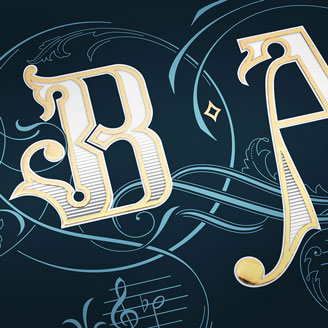
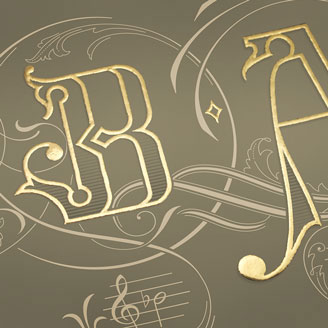








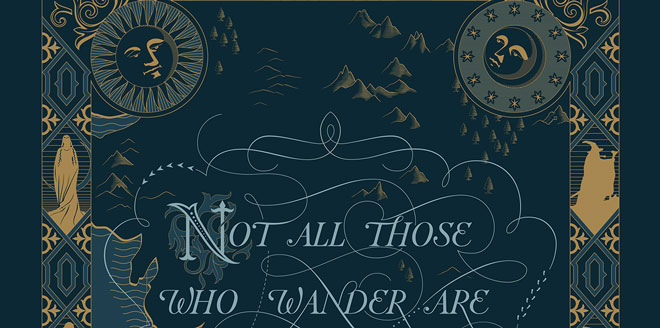




















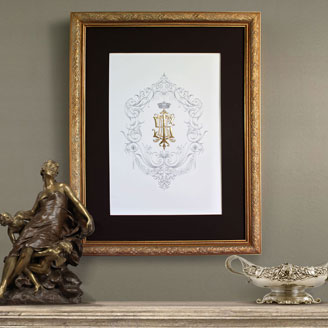



















Artprint Gilded with 24-karat Gold



Ungilded Artprint



Artprint



Artprint Series - Love Joy, Love Blues, Love Lost



Artprint - Love Joy



Artprint - Love Blues

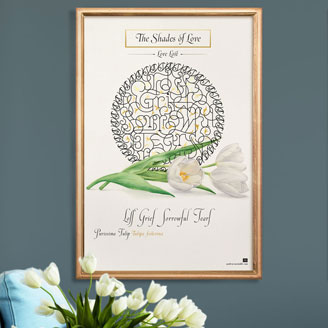

Artprint - Love Lost



Artprint Series - Ivory Parchment & Imperial Blue



Artprint - Ivory Parchment



Artprint - Imperial Blue

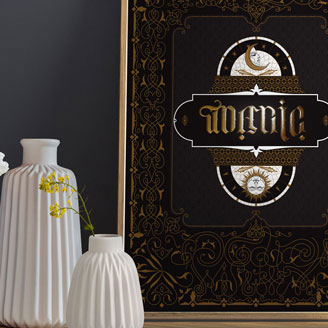

Artprint Gilded with 24-karat Gold

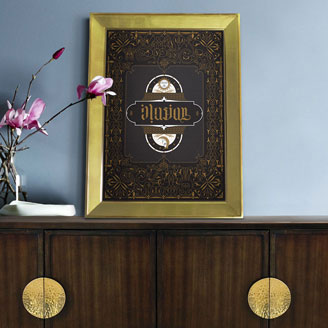

Ungilded Artprint





Display Typeface



Artprint (Choose any letter)



Monogram Mug (Choose any letter)